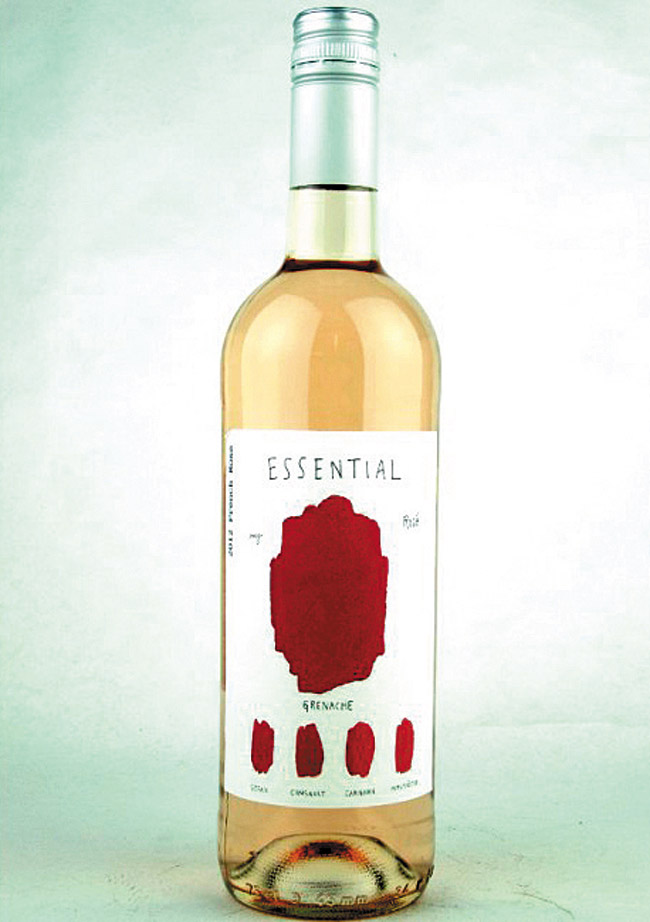Want Refreshing Yet Dry? Think Pink
Dry rosé’s popularity is still on the rise.
Any top restaurant will have at least one dry rosé by the glass, and many have more than a few selections on the wine list.
But our love affair with dry rosé in Hawaii has taken a while to build.
First, we had to get over the color. When most wine drinkers see pink, they think “sweet.” I could point to White Zinfandel as the culprit for creating such inertia. But there were other rosés that were sweet to the palate with that faded color: Mateus Rose, Spanada Sangria, flavored wine coolers, etc. These wines conditioned most drinkers immediately to expect sweetness in the wine.
Thankfully, with education, promotion and experimentation by consumers, the color of rosé is no longer simply the domain of residual sugar. Sommeliers, hipsters and anyone who likes refreshing wines on warm days welcome rosés that are dry.
Those who travel have helped spread the love, as well. And those of you who have spent any time around the Mediterranean Ocean have come across a carafe or bottle or two of dry rosé, I’m sure.
I learned a staggering statistic: Of all the wine sold in Provence, 90 percent is dry rosé! That’s a lot of carafes, my friends.
On numerous occasions, I have had people tell me how much they enjoyed the “simple” dry rosé from a carafe when they were on vacation in Provence. I’m like, yeah! Who wouldn’t? Warm breezes, beautiful scenery, bouillabaisse and the Med lapping at your door.
Hey, that sounds a little bit like Hawaii.
The natural beauty we enjoy is very different from that of the Mediterranean, but not completely removed. We also have the deep-blue ocean, warm weather, great seafood, sandy beaches and beautiful people. So it is not unreasonable to see that dry rosé would do well in our piece of paradise.
Speaking of beautiful people, one cannot discount the influence of the celebrity.
Yes, the celebrity endorsement is very nice, but when celebrities such as Angelina Jolie and Brad Pitt actually have their own estate making some delicious rosé, and it’s on the front page of Wine Spectator, everyone is gonna stand up and take notice, if not run out the door and buy a bottle or two.
Chateau Miraval is not just a pretty face, either. The wines are very good. They show the essence of Provence with great warm fruit of the sun, light herbs and berries, along with a vibrant and refreshing backbone. This is no one-hit wonder. I’ve had two vintages in a row that I would be more than happy to chill down with over a platter of saucisson, olives, pate and artisan bread.
Food! Yes, the food component with rosé is amazing. We have figured out how accommodating dry rosé is with so many different types of cuisine even beyond the cuisine from the shores of the Mediterranean: French, Italian, Spanish, Moroccan, Turkish, Greek. Dry rosé can reach out to Asian-influenced foods, especially those coming from the ocean. Salads with vinaigrettes, eggs and eggplant never prove to be wrong. Dry rosé’s secret lies in its ability to act like a white wine without any oak or tannin, yet give us aromas and flavors that mere white wines cannot.
So, go ahead, be mature and order that bottle of dry rosé with your first course. Admit to yourself that you enjoy pink. I certainly do.
2013 My Essential Rosé ($13) If there is a better dry rosé from France for the money, I’d love to try it. But, for me, this one gets my vote. Great citrus and flower notes abound, the fresh zest appeal leaves my palate salivating for more. For food pairings, see above. It can be found at Fujioka’s Wine Times.
Roberto Viernes is a master sommelier.
rviernes@southernwine.com
Twitter: @Pinotpusher






